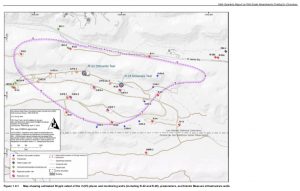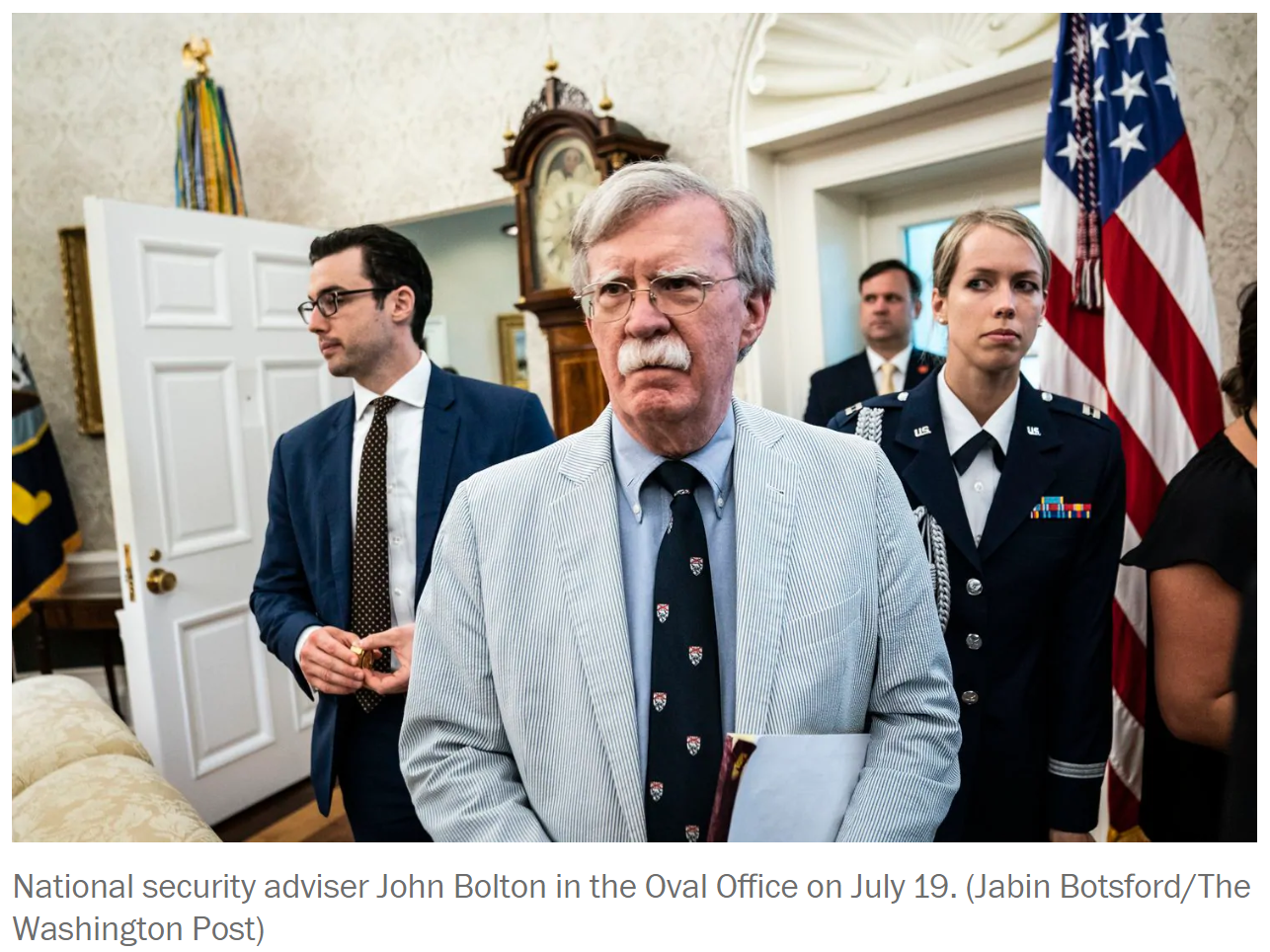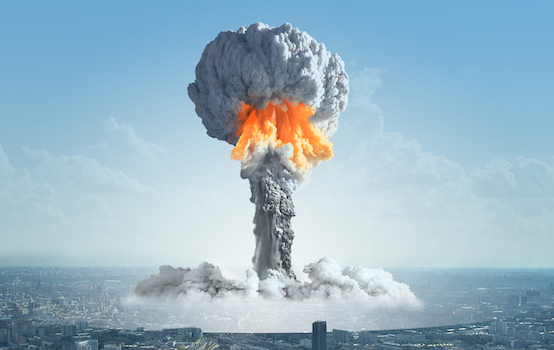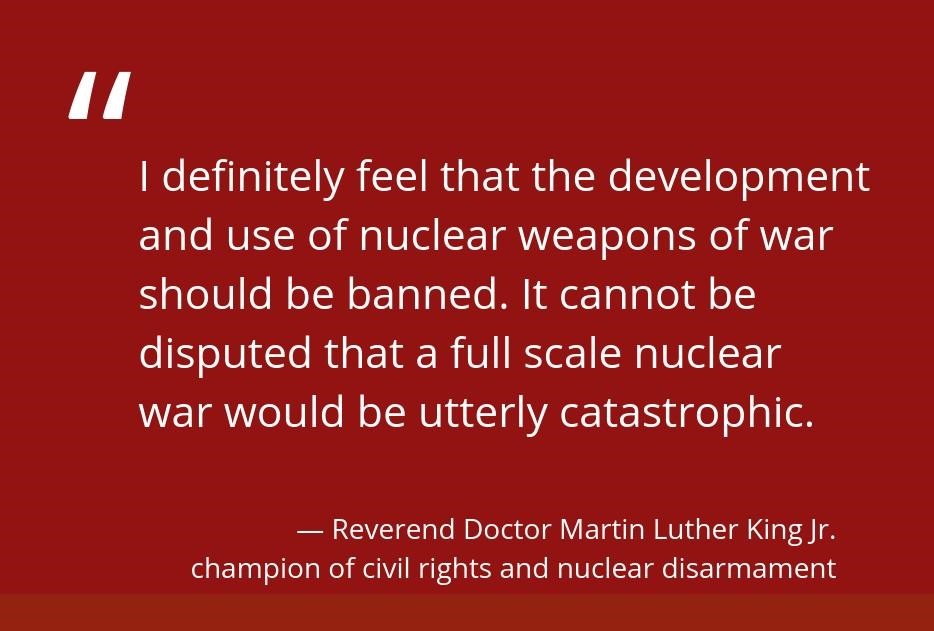2020
Nothing Found
It seems we can’t find what you’re looking for. Perhaps searching can help.
2019
NNSA Weighing Whether Nuke Parts Delays Could Prevent Timely Deployment
EXCHANGE MONITOR | exchangemonitor.com

The National Nuclear Security Administration (NNSA) is still determining if problems with non-nuclear components will prevent the B61-12 gravity bomb and W88 Alt 370 submarine-launched ballistic missile warhead from entering service with the Air Force and Navy.
Arms Control Association – Statement on U.S. Withdrawal from the INF Treaty
“The loss of the landmark INF Treaty, which helped end the Cold War nuclear arms race, is a blow to international peace and security.”
Statement from Daryl G. Kimball, executive director | armscontrol.org | Media Contacts: Daryl G. Kimball, executive director, 202-463-8270 ext. 107; Kingston Reif, director for disarmament policy, 202-463-8270 ext. 104
“Russian noncompliance with the INF Treaty is unacceptable and merits a strong response. But President Trump’s decision to terminate the treaty will not eliminate Russia’s noncompliant 9M729 missiles — and is a mistake.
“Worst of all, blowing up the INF Treaty with no substitute arms control plan in place could open the door to a dangerous new era of unconstrained military competition with Russia.
Communities in the American Southwest Were Exposed to Nuclear Fallout. Can They Get Compensated?
Radiation epidemiology is a science of uncertainty.
BY: ARIA ALAMALHODAEI | motherjones.com
The atomic bomb was born in the desert. In the early hours of July 16, 1945, after a spate of bad weather, a 20-kiloton plutonium-based nuke referred to as “the gadget” detonated near Alamogordo, New Mexico. Firsthand testimonies of the test, codenamed Trinity, converge on the uncanny axis of awe and dread.
The Manhattan Project’s Chief of Field Operations, General Thomas Farrell, wrote that “the strong, sustained, awesome roar…warned of doomsday and made us feel that we puny things were blasphemous.”
The bomb produced a massive cloud column that drifted in several directions, dusting large swaths of the surrounding region with radioactive snow—fallout that settled on buildings, plants, and animals, and that continued to permeate the air as invisible particulate in the weeks and months that followed. Five years later, the Nevada Test Site was established to continue the work that Trinity set alight.
Although the mushroom cloud became the icon of American nuclear activity in the 20th century, the harms of these bombs did not fade with their dimming fireballs. No group in the US understands this better than the downwinders, communities throughout the American Southwest and beyond who were exposed to the fallout of the military’s domestic nuclear test program.
The INF Treaty Officially Died Today
Six months after both the United States and Russia announced suspensions of their respective obligations under the Intermediate-Range Nuclear Forces Treaty (INF), the treaty officially died today.
Federation of American Scientists | Posted on Aug.02, 2019 in Arms Control, Nuclear Weapons, Russia, United States by Hans M. Kristensen & Matt Korda
The Federation of American Scientists strongly condemns the irresponsible acts by the Russian and US administrations that have resulted in the demise of this historic and important agreement.
In a they-did-it statement on the State Department’s web site, Secretary of State Michael Pompeo repeated the accusation that Russia has violated the treaty by testing and deploying a ground-launched cruise missile with a range prohibited by the treaty.
“The United States will not remain party [sic] to a treaty that is deliberately violated by Russia,” he said.
By withdrawing from the INF, the Trump administration has surrendered legal and political pressure on Russia to return to compliance. Instead of diplomacy, the administration appears intent on ramping up military pressure by developing its own INF missiles.

Today, 2 August 2019, the governments of the US and Russia have missed a troubling deadline: the end of the six-month notice period that began when both countries announced their withdrawal from the INF Treaty earlier this year. During this period, the decision could still be reversed if both parties went back to the negotiating table. Now that the deadline has passed, and both states can produce even more nuclear weapons, this time enabled to hit targets in the range of 500 and 5,500 kilometres. These weapons, optimised to destroy cities and wipe out civilian populations, put the whole world – and Europe in particular – at risk.
Lab Claims of Tremendous Progress Need Second Look

Comments to the Northern NM Citizens’ Advisory Board
By Scott Kovac, Nuclear Watch NM, July 24, 2019
Tremendous progress requires overall improvement, not just at one spot. A recent Environmental Management Los Alamos (EMLA) press release claimed “tremendous progress” with regards to the chromium (Cr) plume. Media stories then did their job and generalized that everything about the plume was getting better. This is the kind of public relations’ language that does not help to further the discussion on these complex issues.
A nuclear treaty is about to vanish. Its demise should teach a lesson.
On Friday, a pillar of global security will expire.
BY EDITORIAL BOARD | washingtonpost.com
 Perhaps no one will notice when the Intermediate-range Nuclear Forces Treaty of 1987 slips into oblivion; the threat of nuclear attack in just minutes that seemed so unnerving during the late 20th century has now faded into a distant memory, lost to complacency at the Cold War’s end. But the demise of the INF Treaty should teach a lesson.
Perhaps no one will notice when the Intermediate-range Nuclear Forces Treaty of 1987 slips into oblivion; the threat of nuclear attack in just minutes that seemed so unnerving during the late 20th century has now faded into a distant memory, lost to complacency at the Cold War’s end. But the demise of the INF Treaty should teach a lesson.
Arms control, creating verifiable treaties to limit and reduce nuclear, chemical and biological weapons, had its mystique: obtuse concepts, exotic hardware and mind-bending negotiations. But at its core, arms control was about political willpower. In the case of the INF Treaty, President Ronald Reagan and Soviet leader Mikhail Gorbachev summoned enough of it to eliminate an entire class of deployed weapons, the ground-based missiles with a range of between 300 and 3,400 miles, and their launchers. The treaty made the world safer not only by removing a nuclear threat to Europe but also by introducing novel measures such as intrusive verification and on-site inspections.
If New START Dies, These Questions Will Need Answers
There’s little public indication that the Trump administration is thinking about several things that will happen if the last strategic arms agreement is allowed to expire.
BY VINCENT MANZO & MADISON ESTES | defenseone.com

A U.S. Air Force B-52H Stratofortress bomber takes off from Andersen Air Force Base, Guam, for a routine training mission in the vicinity of the South China Sea and Indian Ocean, Sept 23, 2018.
The Trump administration has articulated an ambitious new vision for nuclear arms control, one that includes China and seeks to limit more types of Russian systems. This vision appears to have little room for the New START agreement, which helped to cap U.S. and Russian nuclear arsenals and which is due to expire in 2021. And yet there is little in the public record to indicate how the administration would deal with various problems that would surface if New START is left to die.
Did Trump Just Threaten to Attack Iran With Nukes?
He said he could destroy Afghanistan but was signaling elsewhere. The scary part is there’s already a plan.

BY SCOTT RITTER | theamericanconservative.com July 25, 2019
On Monday during a press conference between Donald Trump and Pakistani Prime Minister Imran Khan, Trump spoke rather casually of having reviewed plans to annihilate Afghanistan.
“I could win that war in a week. I just don’t want to kill 10 million people,” Trump said. “I have plans on Afghanistan that if I wanted to win that war, Afghanistan would be wiped off the face of the earth, it would be gone. It would be over in, literally, in 10 days. And I don’t want to go that route.”
Trump’s seemingly blasé reference to a hypothetical mass murder on a scope and scale never seen in the history of mankind (it took Nazi Germany more than four years to kill six million Jews) was stunning. We know, given the state of play in Afghanistan, that it will never happen. But it wasn’t offhand. Such a policy of total destruction could also be seen as applying to Iran, and the potential for the use of nuclear weapons in the event of a U.S.-Iranian conflict is far from hypothetical. He knew exactly what he was doing.
Continue reading
2018
Nothing Found
It seems we can’t find what you’re looking for. Perhaps searching can help.
2017
Nothing Found
It seems we can’t find what you’re looking for. Perhaps searching can help.
2016
Nothing Found
It seems we can’t find what you’re looking for. Perhaps searching can help.
2015
Nothing Found
It seems we can’t find what you’re looking for. Perhaps searching can help.

